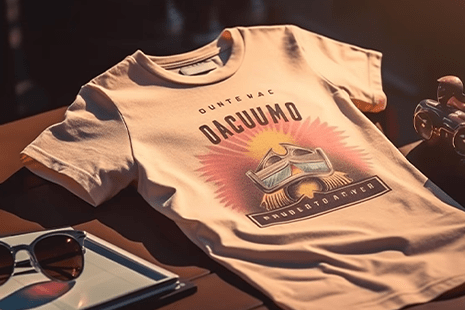The Practical Benefits of Corporate Uniforms in UAE Aviation
The United Arab Emirates (UAE) has become a significant player in the global aviation industry. With its focus on luxury and innovation, UAE Airlines prioritizes a professional image that extends to its staff. Corporate uniforms are more significant than fashion in aviation, where safety, professionalism, and efficiency are paramount. Especially in the United Arab Emirates (UAE), where aviation stands as a symbol of modernity and progress, corporate uniforms play a crucial role in ensuring operational excellence. This blog delves into the practical benefits of corporate uniforms in UAE aviation, shedding light on their role in enhancing safety, branding, and organizational cohesion.
Building Brand Identity
- Cohesive Image: Uniforms create a standardized appearance for all staff, from pilots and cabin crew to ground personnel. This visual consistency strengthens brand recognition and reinforces the airline’s identity in passengers’ minds.
- Cultural Sensitivity: In the UAE, where cultural awareness is paramount in the tourism sector, uniforms can reflect the airline’s commitment to regional traditions while maintaining a modern and professional look. For example, Emirati airlines like Emirates and Etihad often incorporate design elements that reflect the UAE’s cultural heritage into their staff uniforms. It can include subtle nods to traditional clothing styles, or it can use colors and fabrics that resonate with the region.
Professionalism and Trust
- Authority and Expertise: A well-designed uniform signifies professionalism and competence. Passengers are more likely to feel confident and trust the airline’s staff when they are easily identifiable in their uniforms. Studies have shown that people perceive individuals in uniforms as more trustworthy and knowledgeable. It is imperative in the aviation industry, where passenger safety and security are paramount.
- Teamwork and Unity: Corporate uniforms in Dubai foster a sense of teamwork and belonging among staff. It can lead to improved communication, collaboration, and, ultimately, a more efficient operation. When staff feel part of a team, they are more likely to take pride in their work and go the extra mile for passengers.
Practical Advantages
- Safety and Security: Uniforms can be designed with specific features that prioritize safety. For example, pilot uniforms might incorporate fire-resistant materials, while cabin crew uniforms could have pockets specifically sized for safety equipment. Additionally, high-visibility clothing can be used for ground crew members who work on the tarmac.
- Functionality and Comfort: Uniforms made from high-quality, breathable fabrics ensure staff comfort throughout their workday. It translates to better focus, improved performance, and reduced work-related fatigue. Known for their long-haul flights, airlines in the UAE must design their cabin crew uniforms for maximum comfort on long journeys. It might include ergonomic cuts, moisture-wicking fabrics, and easy-to-care-for materials.
- Cost-Effectiveness: By providing uniforms, airlines can eliminate the need for employees to purchase and maintain their work attire. Additionally, bulk uniform purchases often lead to cost savings.
How to Choose the Right Airline Uniform
- Understand Brand Identity and Image:
Begin by understanding your airline’s brand identity, values, and desired image. Consider the message you want to convey to passengers and stakeholders through the uniform.
- Research Industry Standards and Regulations:
Familiarize yourself with industry standards and regulations about airline uniforms, including safety requirements and guidelines. Ensure that the chosen uniform complies with all relevant laws.
- Consider Employee Feedback:
Involve frontline employees, such as flight attendants and pilots, in the uniform selection process. Solicit their input and feedback regarding comfort, functionality, and practical considerations. Their insights can help ensure that the chosen uniform meets the needs of those wearing it daily.
- Prioritize Comfort and Functionality:
- Comfort is crucial for airline employees, who spend long hours in uniform while performing their duties. Choose breathable, lightweight, and stretchable fabrics to provide comfort and ease of movement. Consider features such as moisture-wicking properties and adjustable waistbands for added comfort.
- Prioritize functionality by selecting uniform designs that allow employees to perform their duties efficiently. Ensure that the uniform strategically places pockets for easy access to essential items and accommodates any required accessories or equipment.
- Reflect Brand Identity:
The airline’s uniform serves as a visual representation of the brand. Choose colors, styles, and design elements that align with the airline’s brand identity and values. Consider incorporating brand logos, colors, or patterns into the uniform design to reinforce brand recognition and consistency.
- Balance Tradition with Modernity:
While tradition and heritage may influence the design of airline uniforms, it’s essential to strike a balance between tradition and modernity. Aim for a timeless design that reflects the airline’s heritage while incorporating contemporary elements to ensure relevance and appeal to passengers.
- Customization Options:
Provide customization options to accommodate employees’ diverse preferences and body types. Offer a range of sizes, fits, and optional accessories to allow employees to personalize their uniforms while maintaining a cohesive look across the airline.
- Consider the Environmental Impact:
Consider the environmental impact of the uniform materials and production processes. Opt for sustainable and eco-friendly materials, and choose suppliers with responsible manufacturing practices whenever possible.
- Supplier Selection:
Choose a reputable supplier of airline uniforms who has experience designing and manufacturing them. Research potential suppliers, read customer reviews, and request samples to assess the quality of their products and services.
- Testing and Evaluation:
Before finalizing the uniform selection, conduct thorough testing and evaluation to ensure that the chosen uniform meets all requirements. During the evaluation process, consider factors such as durability, colorfastness, and ease of maintenance.
Why Choose Naziha Uniforms for Corporate Uniforms
Naziha Uniforms stands out as a top choice for corporate uniforms in the UAE due to their commitment to quality, customization options, comfort, compliance with industry standards, wide range of options, excellent customer service, and competitive pricing. When selecting corporate uniforms, Naziha Uniforms ensures that businesses receive durable, functional, and stylish uniforms that reflect their brand identity and meet the needs of their employees.






